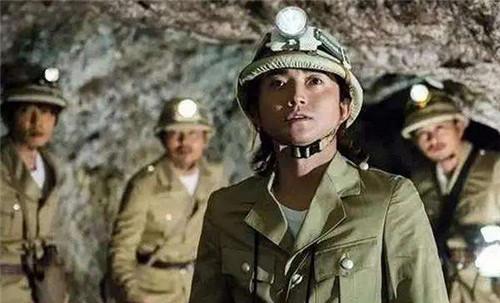In the minds of archaeologists, every object left over from history is a precious treasure. In the long time of our past, there have been countless dynasties that have risen and fallen, and their culture and wisdom have brought all kinds of precious things to posterity, which is the ancient artifacts pursued by various experts, which are engraved with traces of history.

Among the many monuments, the tombs of emperors and celebrities of the past are the most likely places for the existence of cultural relics. Archaeological teams are also often on the road to find ancient tombs, trying to excavate and protect the dusty treasures. The mausoleum of the Guangxu Emperor of the Qing Dynasty is the last imperial mausoleum in the history of our country and has extremely high historical value. But when the experts of the archaeological team entered the mausoleum in 1980, why did they scold first and then cheer? See what they see.
The Guangxu Emperor Ai Xinjue Luo Zai xiang, born in 1871 in the Shichahai Palace in Beijing, was the 11th emperor in the history of the Qing Dynasty. As the grandson of the Daoguang Emperor, he was valued by his father Prince Shuo when he was a child and was loved in every way. But his life did not continue as a young master of the royal palace, but only because of the existence of Cixi.
After the fall of the Xianfeng Emperor in 1861, Cixi began to take power. Although her son Tongzhi Emperor had a situation of "Tongzhi Zhongxing" after he ascended the throne, with his untimely death, power once again returned to the hands of Cixi. In 1875, due to the death of the Tongzhi Emperor and the absence of heirs, the Qing Dynasty urgently needed an heir to stabilize the situation, and Zai Xiang, as the son of Empress Dowager Cixi's sister, was naturally supported by Cixi as the new emperor without any doubt.
In 1889, the Guangxu Emperor was finally able to personally govern, but still did not hold great power. But despite this, he still had his own views on the politics of the dynasty. In the face of foreign enemies, he vigorously led the battle, and saw the shortcomings of the Qing Dynasty, launched the "Hundred Days Restoration", but unfortunately lost at the hands of Cixi and imprisoned. Finally, in 1908, the Guangxu Emperor died at the age of 38.
As an emperor's mausoleum, compared to the people in the past, the Guangxu tomb is really very "concise", but it is still very rich. He was buried in the Chongling Tombs of the Qing Dynasty, which began construction in 1909 and was completely completed in 1915. The tomb has preserved a lot of exquisite funerary products from the late Qing Dynasty, which are valuable cultural relics for the history of the late Qing Dynasty.
After a period of heightened archaeological awareness, in 1980, the cultural relics protection department decided to carry out a rescue excavation of the Guangxu Tomb, aiming to keep as many cultural relics as possible from being stolen by tomb robbers. Several archaeological teams gathered at the Qingxi Mausoleum in Hebei Province, and they were very excited about the imminent excavation of the tomb of the last emperor. But what they never expected was that after entering the ancient tomb, the phenomenon in front of them immediately made them angry and cursed.
A huge robbery cave was facing the main burial chamber, and there was chaos all around, and even the coffin of the Guangxu Emperor had been opened. In the entire tomb, it is almost difficult to find a funerary cultural relic, and the structure of the tomb has not been damaged, all of which shows that the Guangxu Tomb has been "patronized" by a group of experienced tomb robbers.
Based on experts' exploration of the cave, it was preliminarily concluded that this was a tomb robbery that occurred in 1938. The archaeologists continued to investigate, only to find that the Zi Palace, where Empress Longyu was buried next to it, had also been looted and rummaged into a mess. Experts are outraged, not only because of the theft of tomb robbers, but also because of their disrespect for the tomb owner's corpse and the destruction of the tomb itself.
And just when the archaeological team was extremely sad and ready to leave, in a hidden corner, a surviving artifact was suddenly found. This is a pair of jade rings, all jade, according to research, it is known that this is the Guangxu Emperor to his favorite concubine Zhenfei keepsake. This pair of jade rings is a very precious cultural relic, and it is also the only cultural relics left by the Guangxu Emperor that can be protected. After being struck by the tomb robbers, such a treasure was suddenly found, and the experts could not help but cheer again.
Each cultural relic has its own precious value, it may portray the ideological connotation of a dynasty, and it is more likely to carry the life's work of a wise man. It is precisely because of the weight that history has given to cultural relics that the archaeological team must be so active in protecting them, and tomb robbery is an extremely disgraceful act, a violation of the dignity of cultural relics.